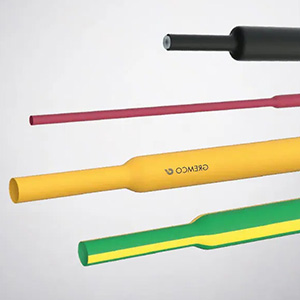- Electrical Insulation: Heat shrink tubing is primarily used for insulating wires and cables, preventing electrical shorts and enhancing safety. This is critical in the aviation industry, where electrical failures can have severe consequences.
- Environmental Protection: Heat shrink provides a protective barrier against moisture, chemicals, and other environmental factors that could damage electrical components and connections in aircraft.
- Strain Relief: It helps to reinforce and protect wire splices and terminations, reducing mechanical stress on the connections and extending their life.
- Bundling and Organizing Wires: Heat shrink tubing is used to bundle wires together, keeping them organized and preventing tangling or damage, which is crucial for maintenance and safety inspections.
- Identification and Labeling: Different colors and types of heat shrink can be used to label and identify various cables and components, making it easier for technicians to perform maintenance and repairs.
- Repair and Maintenance: Heat shrink tubing is often used in the field for quick repairs of damaged wiring and cables, restoring their protective and insulating properties.
- Enhanced Durability: Heat shrink provides abrasion resistance and protection against physical wear and tear, which is essential in the demanding environments that aircraft components are exposed to.
- Noise Reduction: It can also help to reduce noise caused by vibrations by securing loose wires and preventing them from rubbing against each other or other components.
Using heat shrink tubing in these ways helps ensure the reliability, safety, and longevity of electrical systems in aviation, which are crucial for the overall performance and safety of aircraft.



